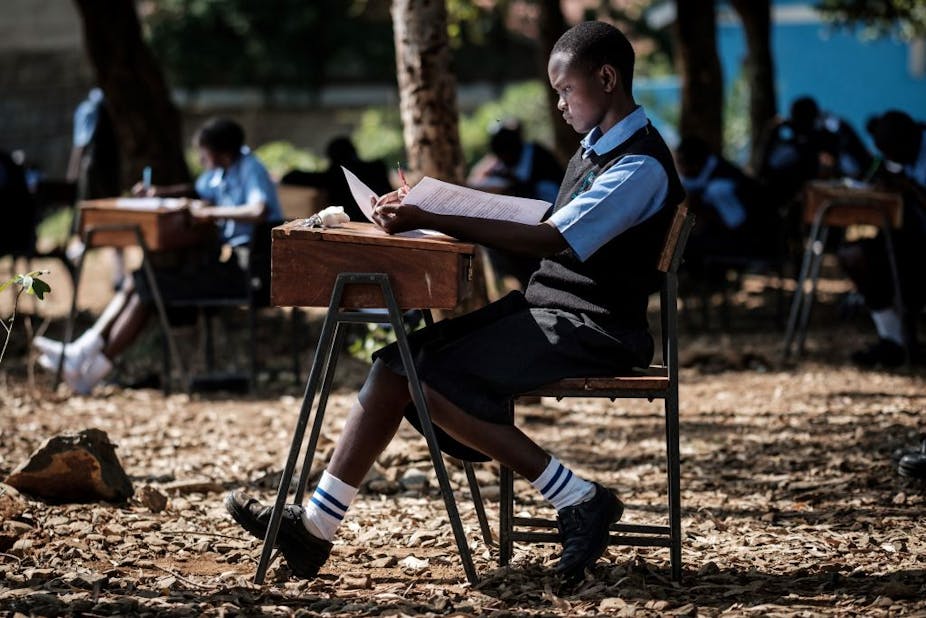More than a million students completed primary school in Kenya last year. All were expected to join high schools in early August under the country’s policy of ensuring 100% pupils transition from primary to high school.
A multiplicity of factors have held children back from moving to high school in the past. These include their parents’ inability to pay school levies and the long distances children have to travel to get to school.
Financial obstacles have been partly overcome through government private sector partnership in funding basic education and empowering local communities through poverty eradication strategies.
Tuition fees have also been waived for public day secondary schools. However, parents are still expected to meet the cost of uniforms, learning materials, meals, transport. In addition sundry expenses are incurred in school development projects.
Another factor is that, in some communities, gender and culture are hindrances, particularly for girls completing their schooling.
The government nevertheless insists the time has come to aggressively pursue its policy goal of 100% transition from primary to secondary school. The percentage of students who progress from primary to secondary has increased from 83% in 2018 to 95% in 2020.
This laudable progress has however been undermined after more than a year of COVID-19. When schools reopened in January 2021, 16% of girls and 8% of boys did not return to school. This is quite high compared to 5.1 % in 2019 and previous years.
What’s behind the goal
Kenya recognises that education is the key for empowering the most marginalised and vulnerable individuals in society. This is also in line with the UN Sustainable Development goal number 4 that everyone should have access to inclusive, equitable, quality education. But the policy of “leaving no child behind” will bring its challenges.
Kenya’s education objectives are driven by both international and national policy commitments. These include in particular Vision 2030. This national long term development blueprint seeks to make Kenya a globally competitive and prosperous nation with a high quality of life by 2030.
In fact, the 100% transition policy was anchored on the education goals of Vision 2030 which are:
to provide a globally competitive quality education and training and research for developmenth, this is as stipulated in the Vision 2030 document.
The government has allocated a significant budget to education to implement reforms such as 100% transition from primary to secondary school. Between final year 2016/17 and 2017/18, government allocation and spending on free day secondary education increased by approximately 50%. The scaling up of the government contribution implies that there could be a complete waiver of tuition fees for day secondary education.
But Kenya is still far from achieving the goals of vision 2030 due to various challenges.
What’s missing
The biggest obstacles to achieving the 100% target are: inadequate resources, political interference, an uncertain political environment, and now the effects of COVID-19.
Obstacles to the goal are both old and new. Dropout rates and early teenage pregnancy have increased during the pandemic. Among pastoral communities, high dropout rates reflect a perceived lack of value of schooling, long distances to schools and high rates of child marriage.
Some of the newer challenges include the fact that the increased number of students has exerted a lot of pressure on the existing infrastructure. The large numbers are disruptive and difficult to handle by the teachers. With overstretched facilities, cases of students learning under trees and makeshift tents are emerging in many parts of the country.
Overcrowding of classrooms results in reduced one on one interaction between the learners and teachers. It also reveals inequalities between regions. While Nairobi County has an average ratio is 50 learners per teacher, Turkana County has an average of 92 learners per teacher.
Lack of proper planning on the part of the government has compounded the problem. For instance, congestion in classrooms and dormitories can be attributed to lack of a proper expansion programme.
What must be done?
Education and training is fundamental to the social transformation envisaged under Vision 2030. For 100% transition to be achieved the following needs to be done; full implementation of education policies, improved accountability, training of more teachers, improved infrastructure, investment in technology and enhancement of government–private sector partnerships in education.
The government needs to work with all stakeholders, the school managers, the local communities and the private sector to explore potential and sustainable solutions in relation to individual needs and local context if Kenya is to achieve 100% transition and offer quality education to its citizens.
There is need for the Kenyan government to build resilient education systems for equitable and sustainable development. This will enable the government to respond to immediate challenges like the COVID-19 pandemic which almost crippled the education system and equip it to better cope with future crises.
More teachers need to be employed to cope with the increasing number of students in secondary schools. Increased budgetary allocation should be given to schools to cater for infrastructure to reduce congestion in classrooms and dormitories.

